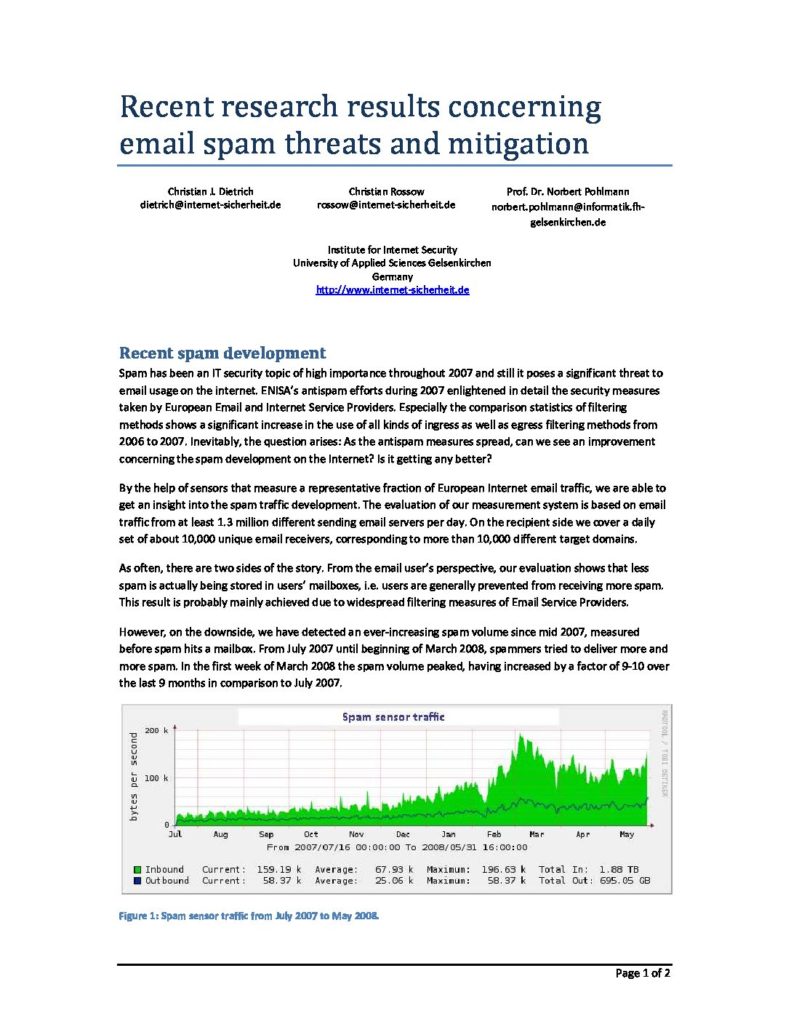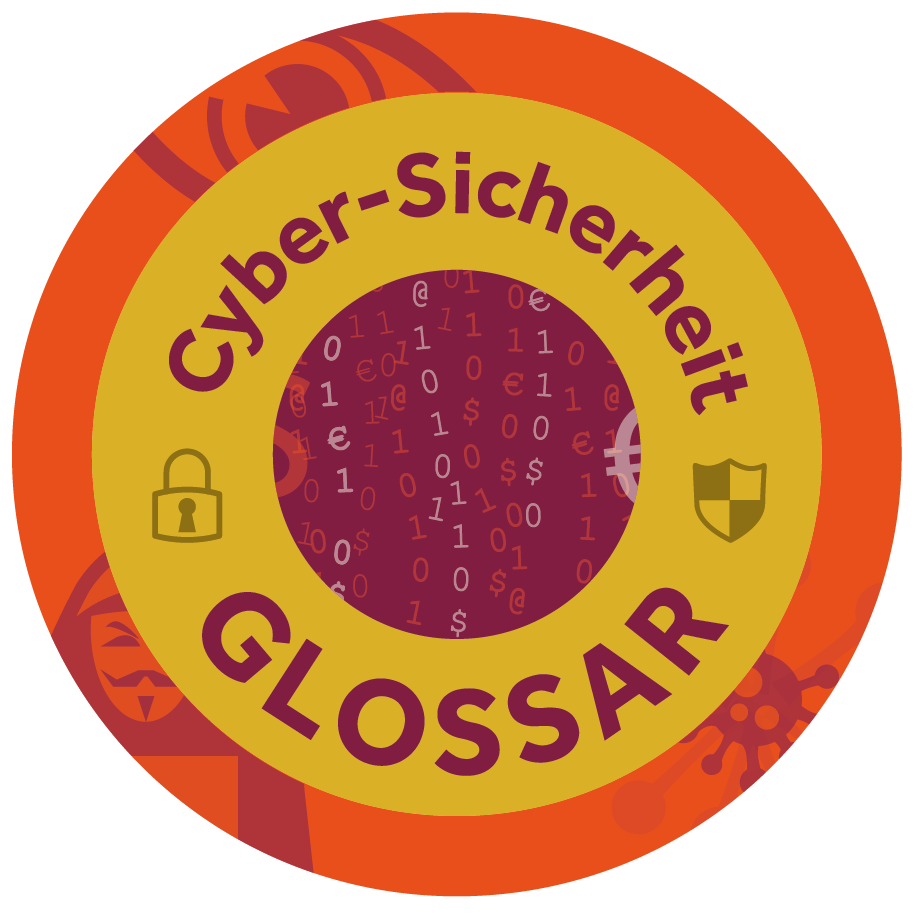C. Dietrich, N. Pohlmann, C. Rossow:,
“E-Mail Spam Threats and Mitigation Recent research results”,
ENISA Quarterly Vol. 4,
No. 2,
Apr-Jun 2008
Spam has been an IT security topic of high importance throughout 2007 and still it poses a significant threat to email usage on the internet. ENISA’s antispam efforts during 2007 enlightened in detail the security measures
taken by European E-Mail and Internet Service Providers. Especially the comparison statistics of filtering methods shows a significant increase in the use of all kinds of ingress as well as egress filtering methods from
2006 to 2007. Inevitably, the question arises: As the antispam measures spread, can we see an improvement concerning the spam development on the Internet? Is it getting any better?
By the help of sensors that measure a representative fraction of European Internet email traffic, we are able to get an insight into the spam traffic development. The evaluation of our measurement system is based on email
traffic from at least 1.3 million different sending email servers per day. On the recipient side we cover a daily set of about 10,000 unique email receivers, corresponding to more than 10,000 different target domains.
As often, there are two sides of the story. From the email user’s perspective, our evaluation shows that less spam is actually being stored in users’ mailboxes, i.e. users are generally prevented from receiving more spam.
This result is probably mainly achieved due to widespread filtering measures of E-Mail Service Providers.
However, on the downside, we have detected an ever-increasing spam volume since mid 2007, measured before spam hits a mailbox. From July 2007 until beginning of March 2008, spammers tried to deliver more and
more spam. In the first week of March 2008 the spam volume peaked, having increased by a factor of 9-10 over the last 9 months in comparison to July 2007. At first glance, the high spam volume on the Internet seems to contradict the comparably low amount of spam messages in mailboxes. However, the explanation of these two facts is simple: The high spam volume on the
Internet reflects the connection attempts and the delivery efforts of spammers. Actually, due to the wide spread use of spam filtering mechanisms and the improved detection rates of spam filters, only few of the spam messages make it through and actually reach the mailboxes. To further elucidate: an antispam method that correctly detects 99% of all spam messages requires a spammer on average to deliver 100 spam messages in order for one spam message to make it through, statistically. Although this example is simplified, it shows the extent to which spammers adapt to the enhancements made in antispam techniques.
Spam sources
Furthermore, not only the volume of spam increases, but also the distribution of spam has changed. Nowadays, botnets are responsible for most of the spam sent on the Internet. The fact of abusing someone else’s
computer makes it easy for a spammer to cover the tracks. In addition, botnets are difficult to detect before any abusive behavior occurs. And even if a botnet is detected, quite an effort is needed and several parties are
involved in order to take it down. Botnets are highly dynamic to evade countermeasures.
Unfortunately, botnets are not only used for spamming, but also for other kinds of misuses, such as hosting phishing sites, mounting distributed denial of service attacks or spying confidential data from the infected
computers. Among those abusive actions, spam is the most obvious one because the bots play an active role – they send out messages that can be detected by spam filters. Thus, detecting spam sources can not only be
used to protect from spam in the future, but could also be useful to protect from possible other threats such as phishing or denial of service attacks. All in all, a reputation service could summarize and collect different kinds
of abuse and make that information available to others. …
kostenlos downloaden | 




